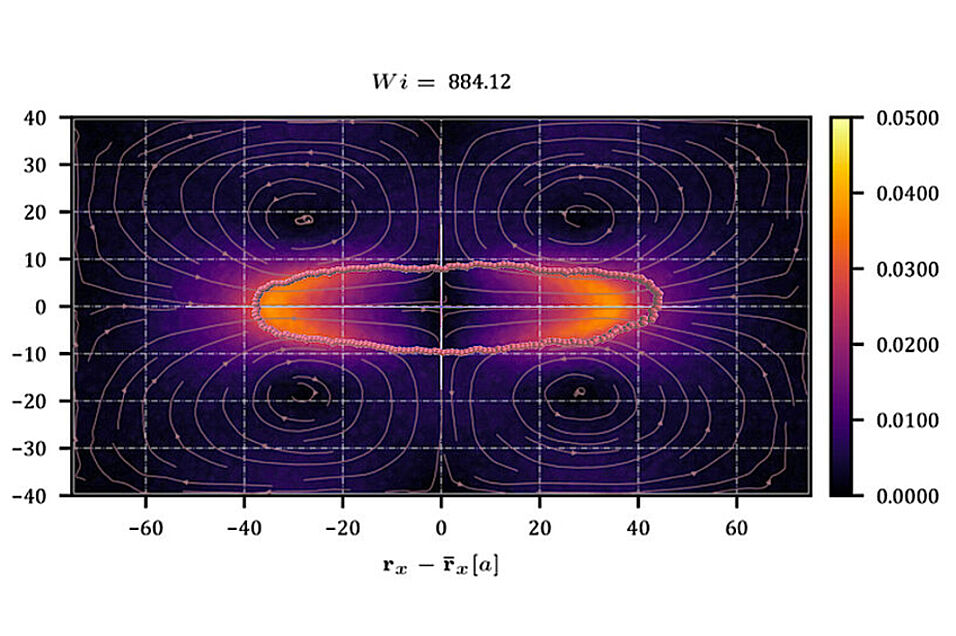Together with his advisor Christos Likos and also in collaboration with Marisol Ripoll from the Jülich Research Center, Max has discovered by theory and simulation in 2018 that when ring polymers are subjected to shear, the backflow of the solvent and the ring topology result into a polymer behavior not known before and not encountered for any other polymers: a swelling of the ring in the direction perpendicular to both flow and velocity gradient - the so-called vorticity direction, giving a name to the phenomenon they discovered: vorticity swelling of the rings. Convincing the referees of the validity of their simulation results at the time was not an easy task, as the authors of the paper vividly recall: the phenomenon was new and unexpected, and it is a healthy practice in science to be skeptical about claims of novelty. However, evidence from theory and simulation was sufficiently strong and the paper has been published and well-cited since its publication [M. Liebetreu, M. Ripoll, and C. N. Likos, "Trefoil Knot Hydrodynamic Delocalization on Sheared Ring Polymers", ACS Macro Letters 7, 447-452 (2018). DOI: 10.1021/acsmacrolett.8b00059].
The ultimate dream of theorists, though, is not the mere proliferation of their findings but rather their experimental confirmation (sometimes even the refutation of the same can be intellectually rewarding but this is a different story altogether). Charles Schroeder at the University of Illinois at Urbana-Champaign and his team are leading experimentalists in the area of single polymer dynamics, which allows for the direct observation of individual polymer molecules in non-equilibrium flows. In collaboration with Rae Robertson-Anderson at the University of California San Diego, the US scientists used fluorescently-labeled DNA rings and built a custom shear flow device to analyze in detail the shapes and conformations of ring polymers under shear flow - the very same setup the Viennese theorists had simulated two years earlier. Much to the delight of the latter, experiment has confirmed that vorticity swelling is real: rings under shear do in reality what they have been predicted to do in theory [M. Tu, M. Lee, R. M. Robertson-Anderson, and C. M. Schroeder, "Direct Observation of Ring Polymer Dynamics in the Flow-Gradient Plane of Shear Flow", Macromolecules, in press (2020). DOI: 10.1021/acs.macromol.0c01362].
In subsequent work, Liebetreu and Likos went further and predicted a phase of full stretching of the ring at shear rates even higher than those tested experimentally, a phenomenon termed hydrodynamic inflation [M. Liebetreu and C. N. Likos, "Hydrodynamic inflation of ring polymers under shear", Communications Materials 1, 4 (2020). DOI: 10.1038/s43246-019-0006-5]. Whether this will also be experimentally confirmed remains at the moment an open question. Be that as it may: the interplay between experiment and theory and the spontaneous, curiosity-driven communication between researchers all over the world, motivated by their striving for exploration and understanding, remains one of the most rewarding aspects of scientific activity.
Twitter of the Schroeder group: @TheSchroederLab

